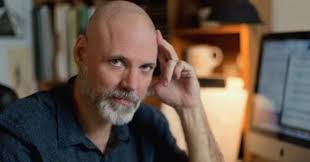Composition History
Joseph Klein composed Goblin Market: for solo trombonist and environment between July 1992 and June 1993, with composition supported in part by a Composer Fellowship from the National Endowment for the Arts (Klein, Title page, Goblin Market). In email correspondence with the Christina Rossetti in Music project, Klein described the collaboration with trombonist William Bootz that lay behind the selection of Rossetti’s “Goblin Market.” Although the composition was completed only months in advance of the centenary of Rossetti’s death in 1994, Klein confirms that it was not intended to mark that centenary, of which Klein had been unaware.
In email communication, composer Joseph Klein wrote, “Admittedly, this is a pretty surreal and somewhat esoteric interpretation of the Rossetti poem, so it might seem a bit bizarre in comparison to other musical settings" (Klein, "Re: Goblin Market"). Klein goes on to describe the genesis of the work, which he says came “completely from Bill Bootz, the trombonist” who at the time was in an ensemble called “Tales & Scales,” based in Evansville, Indiana. “The ensemble commissioned composers to work with theater directors and writers to develop musical interpretations of various children's stories,” continues Klein. Klein and Bootz had both worked with the ensemble in the late 1980s on a setting of the tale “Stone Soup.” The musicians in the ensembles also acted out the various parts in these children’s stories. Klein remarks that “Bill [Bootz] was quite overtly theatrical and often took the lead role in the various productions as a result.” Klein recalls that Bootz asked him if he “would be interested in doing a similar treatment with ‘Goblin Market,’ though since he [Bootz] felt the story might not be entirely appropriate for elementary school children, he wanted it to be more of a solo project” (Klein, "Re: Goblin Market"). Thus, this composition project in part owes its particular form to Rossetti’s poem’s ambiguous status on the margins of juvenile and adult literature: Bootz and Klein arrive at their inspiration via children’s stories, but they are sensitive enough interpreters to see that the “the story might not be entirely appropriate for elementary school children,” and Klein goes on to create a challenging, experimental, psychologically astute composition that is geared for adult audiences.
Klein received a Composer Fellowship from the National Endowment for the Arts in 1993 to compose the work, but by this time, Bootz and Klein were separated by considerable distance, with Bootz in Indiana and Klein in North Texas. As Klein remembers, “Bill and I collaborated on the piece long distance, and it grew increasingly surreal as it progressed.” On reflection, Klein suggests that “Even though my approach to the material seems completely antithetical to the text (and the Pre-Raphaelite sensibility), I found that the absurdity kind of heightened the eeriness of the story.” Klein also points out that there are close connections between the musical material and the storyline in the poem, and that he included movement titles to “help to give a bit of guidance for the listener” (Klein, "Re: Goblin Market").
Klein’s insight into the text and his use of music to convey his reading of the text is impressive: “One thing that I think is particularly notable for its approach to the text is the fourth movement—resistance (improvisation)—which is the part of the poem where Lizzie is assaulted by the goblin men in her attempt to save Laura. This is the only part of my piece where the text is actually read, but it is distorted mostly beyond recognition by the computer; additionally, the euphonium (which the trombonist plays) is ‘violated’ by the addition of rubber tubing and noisemakers, and festooned with Christmas lights. . . . So not only is the instrument and text assaulted in this movement, but the entire section is kind of a sonic and visual assault on the audience (with the addition of strobe lights as well).” Thus, Lizzie’s assault by the goblins is represented by Klein with full appreciation of the goblins’ attempted violation of her; moreover, Klein represents this assault and resistance seriously but without explicitly sexualizing the encounter. Klein’s interpretation also has touches of humour. For instance, he writes that there “is kind of an inside musical joke” in the violated euphonium, “since trombonists are often called upon to play euphonium in symphony orchestras, and usually hate doing so" (Klein, "Re: Goblin Market").
Source:
Klein, Joseph. “Goblin Market.” Joseph Klein, Division of Composition Studies, College of Music, University of North Texas, josephklein.music.unt.edu/compositions/goblin_market. Accessed 15 Dec. 2017.
Klein, Joseph, "Re: Goblin Market." Received by Mary Arseneau, 1 Feb. 2017.


